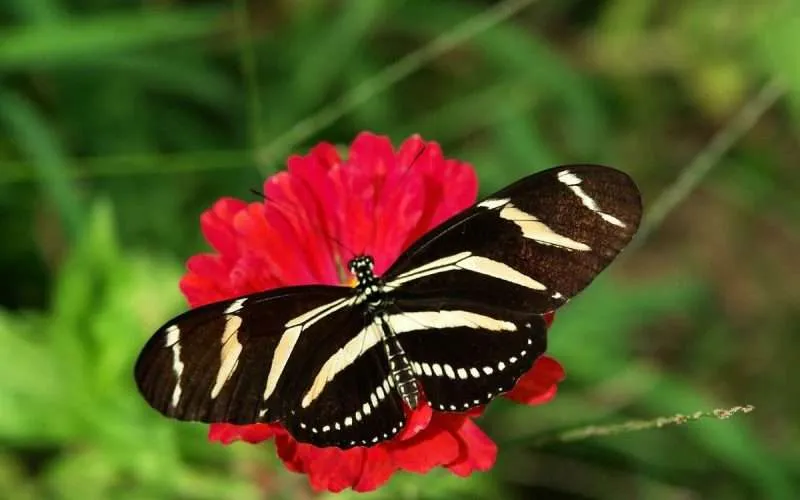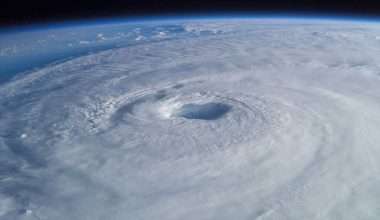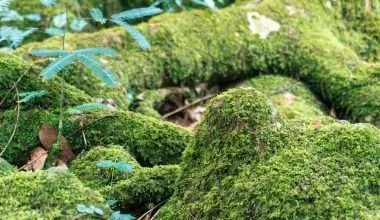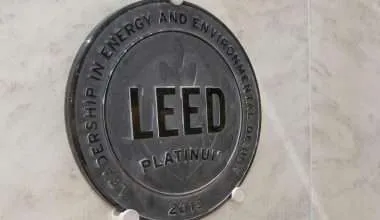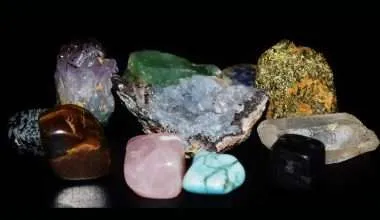Table of Contents Show
Florida is a state in the United States of America that is known as the flattest state. It is widely referred to as the ‘Sunshine State’. The climate of Florida is majorly very humid and the state comes under the tropical regions of the world.
The native plants of Florida are conditioned in a way that suits the climate well. They are well introduced to the soil conditions there and hence, are able to survive there without extra need of irrigation and fertilization.
Due to the fact that the Florida native plants have been surrounded by wildlife for years, they are capable of adapting to the biodiversity there. They attract important pollinators towards the plants which is essential for Florida’s food production.
Most of the plants which are native to Florida are known for their beauty and low maintenance. The plants have adapted to the state’s heat, humidity, and drought. One of the major benefits of growing a native plant is that it prevents erosion, and the unnecessary spreading of invasive species, and also plays a great role in supporting the ecosystem.
However, it is not easy to select which native plants to grow in your backyard or your garden because their characteristics vary. The plants are easy to grow so you will not face any serious problems.
Following are the 12 plants that are native to Florida.
12 Plants Native to Florida
1. Beauty Berry (Callicarpa americana)

The American Beauty berry is a plant that grows vibrant and delicious purple berries. These grow in the form of clusters on the branches of the plant. The berries are a vital part of the diet of many species of birds.
Plus, the foliage is a favorite of white-tailed deer. These are generally shrubs that have the ability to reach a height of 9 feet when they get the right soil and moisture conditions.
They love to grow in a full sun or a partially shaded area. For an optimum growth, they need a well-drained soil.
2. Yellow Jessamine (Gelsemium sempervirens)

Yellow Jessamine is a really pretty plant with beautiful yellow flowers. It is native to the Southern states of United States. The flowers of this plant are shaped like a trumpet which are very sweet smelling.
Flowers of the plant bloom from February to May in the form of clusters with evergreen foliage. The average height of the stems is about 20 feet. These tend to climb over trellises and fences in order to provide dense coverage throughout the year.
Moreover, this plant is deer and rabbit resistant. However, remember that this a very toxic plant as it causes skin irritation when you come in contact with it. If you plan to plant it, ensure that children do not reach it as it is one of the non-exotic plants.
For a well grown Yellow Jessamine, ensure that they get a full sun exposure. They like to grow in a well-drained, moist soil.
3. Eastern Red Columbine (Aquilegia canadensis)

Eastern Red Columbine is also known as little lanterns due to their unique shape. The plants’ branches can grow up to 2 feet tall and then show off their drooping shaped flowers. The flowers look like bells that are drooping.
Mid-spring to early summer is the time when they bloom beautifully. They are found in many colours like red, yellow, orange, and many others. They also have unique petals which are shaped like stars on the back and the front ones have a round shape.
In addition, this plant also loves to get the full exposure of sun for a good growth. The soil they need should be well-drained and which does not get too dry too soon.
4. Buttonsage (Lantana involucrata)

Buttonsage plant grows flowers in densely clustered form. They are widely known for their strong fragrance and white-lavender tones. These are mostly found surrounding the coastal areas and pine lands from Florida west to the Keys.
As a matter of fact, they are a good addition to pollinator friendly gardens because the nectar is appealing to a number of different species of butterflies.
Full exposure of the sun is highly appreciated by the buttonsage plants but can also be grown in a partially shaded area. They like a sandy, well-drained soil to grow at an optimum level.
5. Firebush (Hamelia patens var. patens)

A Firebrush plant is also a Florida native that has a second name as well which is called ‘scarlet bush’. This plant grows perennial clusters of long tubular flowers in summers. In the fall, it grows berries. The plant includes bold shrubs which grow fast and attract butterflies, hummingbirds, and other pollinators.
Although the Hamelia patens has a lot of different varieties worldwide, but the Hamelia patens var. patens is the one that is native to South Florida. If you wish you identify the plant, you can do so by the small, red flowers it has.
Also, there is another variety of Hamelia patens known as African firebush or Dwarf firebush which is not recommended to plant in your garden because it can hybridize with the native shrub.
The Firebush plant is also one of those plants who love full sun exposure but can also adapt to partial shade. The plant needs a well draining soil for a good growth.
6. Powderpuff Mimosa (Mimosa strigillosa)

Powderpuff Mimosa is a native Florida plant that spreads abundantly on the ground and which is why it is often used as a ground cover. It forms a deep root system and helps to control soil erosion and even works on maintaining drought tolerance.
The plant grows puffy, round flowers which begin blooming from spring to fall. This plant has bright green colored leaves which look like ferns and tend to fold up when they are touched.
Sometimes gardeners choose to utilize the plants as turf replacements through keeping them mowed. This plant is also fond of a full sun but has the capability to adapt to a partially shaded area. The soil needed for the plant should be sandy and well-drained.
7. Leavenworth’s Tickseed (Coreopsis leavenworthii)

Tickseeds are the plants that have adorable small yellowy flowers with opposite leaves. The flowers of these plants bloom all year round but majorly in May, June, and July. About 12 different species of Coreopsis are native to Florida and are collectively known as the state wildflower.
Also called a common tickseed, the leavenworth’s tickseed is completely restricted to Florida. These plant do not adapt to shaded areas and only grow under full sun. The soil requirement of the plant is a well draining soil which is slightly moist.
8. Oakleaf Hydrangea (Hydrangea quercifolia)

Oakleaf hydrangeas are plants that grow flowers in the shape of a pyramid in the form of clusters. They mostly bloom in late spring and summer. As they grow along the different weathers, they gradually turn from bright white color to pink or purple.
As for the name, the leaves of this plant are like oak leaves which are large and slightly fuzzy. The growth of their shrubs range between 4 to 8 feet tall. The flowers of this plant are majorly known for their long-lasting properties.
Full sun exposure is appreciated by this plant but can also survive in a shaded area. They like a rich, well-draining soil to reach their optimum growth.
9. Purple Coneflower (Echinacea purpurea)

Purple coneflower is a beautiful purple perennial flower. These flowers can be used in various ways. The flower is mainly found in a bright purple color. The humid and hot climate of Florida is well suited for this flower to grow in all year round.
Furthermore, purple coneflower belongs to the same family as the common daisy which is renowned for its ease of growth and the fact that it has a longer bloom time. Purple coneflowers in your garden or your backyard will make your place fresher and brighter. As you may well know, some people love purple flowers. They feel that that the color is a symbol of elegance and royalty.
Plus, it is an attractive flower for pollinators like bees and butterflies.
10. Gaillardia (Gaillardia Pulchella)

The Gaillardia is also known as the blanket flower which is a perennial plant native to Florida. The flowers bloom throughout summer and fall with very bright colored flowers.
Additionally, the flowers of the plants can be single, double, semi-double, or tubular. The plant has soft and hairy leaves above which it grows on long stems. The natural hybridization of the plant leads to variations in colors and the shape of its petals.
Mostly, the colors of these flowers are orange-red, reddish-purple, orange, and solid yellow. A great quality that the plant has is that it can reseed itself which makes them appear every year.
11. Muhly Grass (Muhlenbergia Capillaris)

Muhly grass is an easy-to-grow plant which is extremely versatile. It is one of the main plants that are native to Florida and they are very showy during the fall season with just a little bit of maintenance.
You can always find the muhly grass in Flatwoods and on the edges of highways and coastal lands all over Florida. It gives a great look when placed on the borders which is why it is used in mass plantings. It is the most common preference in home gardens and commercial areas.
The height to which this plant reaches is up to three feet tall and almost three feet wide too when it reaches the maturity point.
12. Passion Flower (Passiflora Incarnata)

Another perennial plant native to Florida is the Passion flower which is very easy to grow. The flowers which bloom on this plant come in a number of different shades of purple which grow to a size of five inches.
Flowers of this particular plant have five far-flung petals. The center part of the flower is similar to a helipad, which contains a small yellow pollen sac with the shape of a bean above its head. The flowers only bloom for one day during the season of summer and fall.
Passion fruit that grows on the plant is ovoid in shape and is edible. It has delicious taste. A fun fact is that the plant can survive without water. It is a very important plant for you if you have a butterfly garden. Moreover, you can find additional information about this amazing plant from University of Florida resources.
